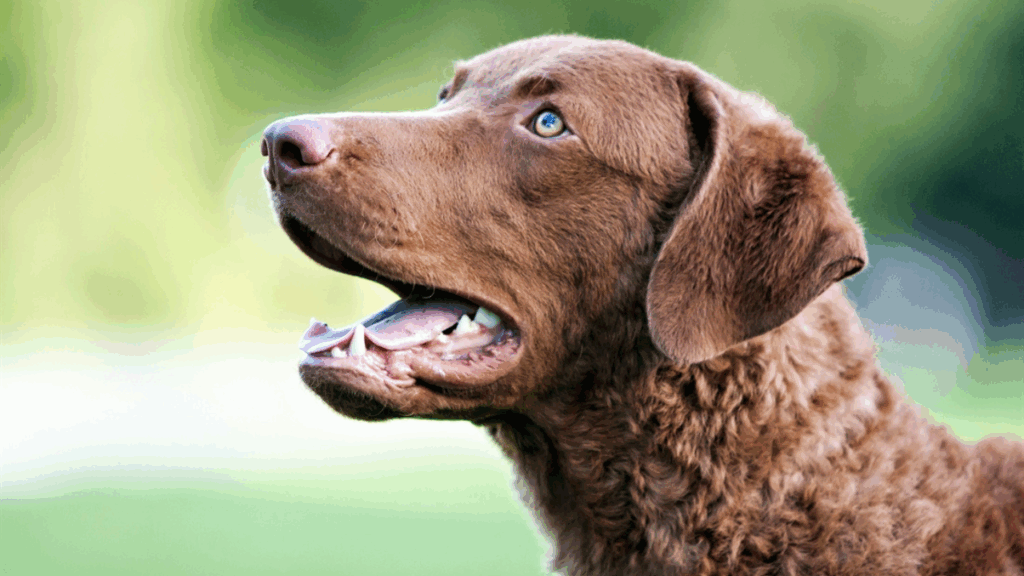The Chesapeake Bay Retriever is one of the most well-regarded and distinctive breeds among retrievers, known for its remarkable resilience, strength, and exceptional ability as a working dog. With a rich history steeped in waterfowl hunting, this breed stands out not only for its physical capabilities but also for its intelligence, loyalty, and tenacity. Whether it’s a day in the field retrieving waterfowl or a quiet evening spent as a family companion, the Chesapeake Bay Retriever excels in every aspect of dog ownership.
Origins and History
The Chesapeake Bay Retriever has deep roots in the Chesapeake Bay region of the United States. The breed’s history dates back to the early 19th century, when two Newfoundlands, a male and female, were rescued from a shipwreck off the coast of the Bay. These two dogs were eventually bred with other retriever types, including the Labrador Retriever and Curly-Coated Retriever, creating a robust, water-loving dog that could handle the harsh conditions of retrieving game from the cold waters of Chesapeake Bay.
The breed was originally developed to assist waterfowl hunters by retrieving shot ducks and other game from the water, often in difficult and icy conditions. Their excellent swimming abilities, combined with a natural drive for retrieving, made them invaluable to hunters in the region.
Officially recognized by the American Kennel Club (AKC) in 1878, the Chesapeake Bay Retriever has since become one of the most respected breeds in the sporting dog world, particularly for waterfowl hunters and those who need a highly skilled working dog.
Physical Characteristics
The Chesapeake Bay Retriever is a medium-to-large-sized dog, built to withstand challenging environments and physical tasks. Males typically stand between 23 to 26 inches at the shoulder and weigh 65 to 80 pounds, while females are slightly smaller, standing 21 to 24 inches and weighing 55 to 70 pounds.
One of the most distinct features of the Chesapeake Bay Retriever is its water-resistant coat. Their short, dense coat is a combination of a soft undercoat and a rough, oily outer layer, which helps keep the dog warm and dry in cold water. The coat is typically liver (brown) or deadgrass (light tan) in color, and it’s an essential characteristic that enables the breed to thrive in harsh, wet conditions.
The breed has a well-muscled, athletic build with a broad chest, strong legs, and webbed feet, all of which contribute to its superior swimming ability. The tail is thick at the base and tapers toward the end, often carried low while swimming, and it functions like a rudder to help the dog steer through the water. Their eyes are amber or yellow, adding to their keen hunting capabilities, while their ears are small and lie flat against the head.
Temperament and Personality
The Chesapeake Bay Retriever is an intelligent, independent, and energetic breed that thrives when given a task to do. Known for their work ethic and drive, these dogs excel as hunting partners, as well as in various dog sports, including obedience and field trials. Their natural retrieving instinct is second to none, and they are known for their determination to get the job done, even in the most challenging conditions.
While they are fiercely dedicated workers, Chesapeake Bay Retrievers are also known for their loyalty and affection toward their families. They are protective of their loved ones and often form close bonds with their owners, making them excellent companions. However, their independent nature means they are not always as eager to please as some other breeds, so early socialization and training are important to ensure they become well-rounded, well-behaved pets.
This breed is also known for being reserved around strangers, though they are not typically aggressive. They are naturally protective, and their wariness of unfamiliar people makes them excellent watchdogs.
Due to their high energy levels, they require regular mental and physical stimulation to remain happy and well-adjusted. This makes them best suited for active families, hunters, or individuals who can provide them with ample exercise and opportunities for engagement.
Exercise and Training
Chesapeake Bay Retrievers are a high-energy breed that thrives on regular exercise and activity. They are excellent swimmers, and activities like swimming, running, and playing fetch are ideal for keeping them healthy and happy. Daily walks or runs are also essential, along with opportunities to engage in water-based activities that allow them to use their natural abilities.
Because of their intelligence and drive, Chesapeake Bay Retrievers are relatively easy to train, though they can be a bit independent or stubborn at times. Positive reinforcement methods work best for this breed, and early socialization and training are essential to ensure they grow into well-behaved and confident dogs.
Their love for retrieving makes them ideal candidates for field trials, hunting, or competitive dog sports. They are often used in hunting as part of a waterfowl retrieving team due to their strong work ethic and water capabilities.
Grooming and Health
The Chesapeake Bay Retriever’s coat requires minimal grooming, but it should be brushed regularly to remove loose hair and debris. Their oily coat is designed to repel water, but it’s also important to ensure their skin stays healthy by avoiding excessive bathing, as it can strip the natural oils from their fur.
As with any breed, regular veterinary care is essential for maintaining the health of a Chesapeake Bay Retriever. They can be prone to certain health conditions, including:
- Hip and elbow dysplasia
- Progressive retinal atrophy (PRA)
- Gastric torsion (bloat)
- Canine epilepsy
- Hypothyroidism
On average, Chesapeake Bay Retrievers live between 10 to 13 years.
Ideal Home
Chesapeake Bay Retrievers are best suited for active families or individuals who can provide them with the necessary exercise and stimulation. They thrive in environments with access to water or wide-open spaces, making them ideal companions for hunters, swimmers, and those who enjoy outdoor activities.
While they can adapt to various living situations, they do best in homes with large yards or access to places where they can run and swim. They are not typically well-suited for apartment living due to their high energy levels.
Conclusion
The Chesapeake Bay Retriever is a remarkable breed that combines strength, intelligence, and versatility. With its rich history as a waterfowl hunting companion, this breed excels in the field, on the water, and in the home. Loyal, loving, and hardworking, the Chesapeake Bay Retriever is the perfect partner for active families, hunters, and those willing to provide it with the exercise, training, and care it needs to thrive.

Andy Parker is a dog lover, writer, and senior editor at BarkPicks. With years of experience covering canine health, training, and gear, he helps pet parents make smarter choices for happier, healthier dogs. Andy shares his home (and heart) with two rescue pups, Charlie and Mia.



